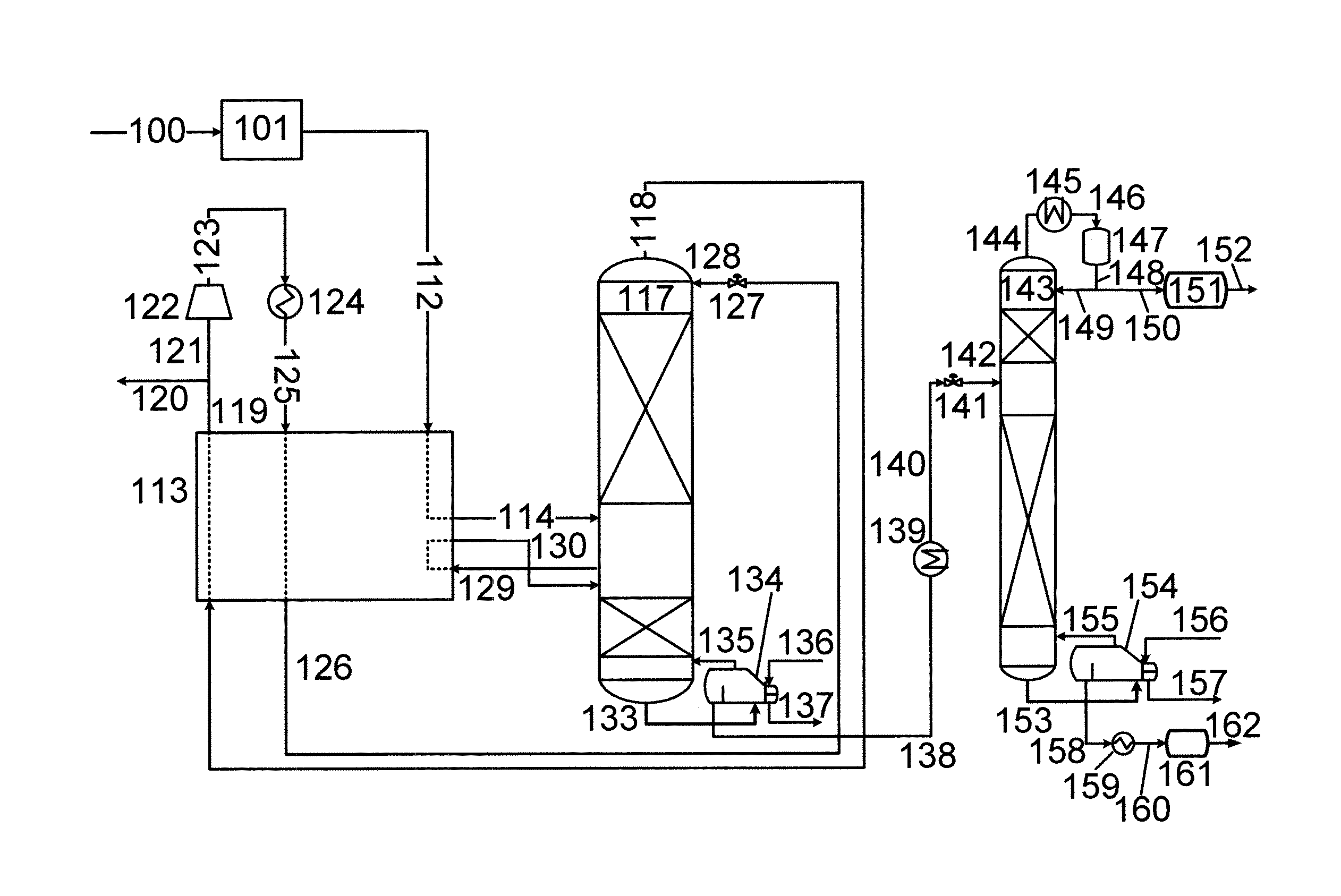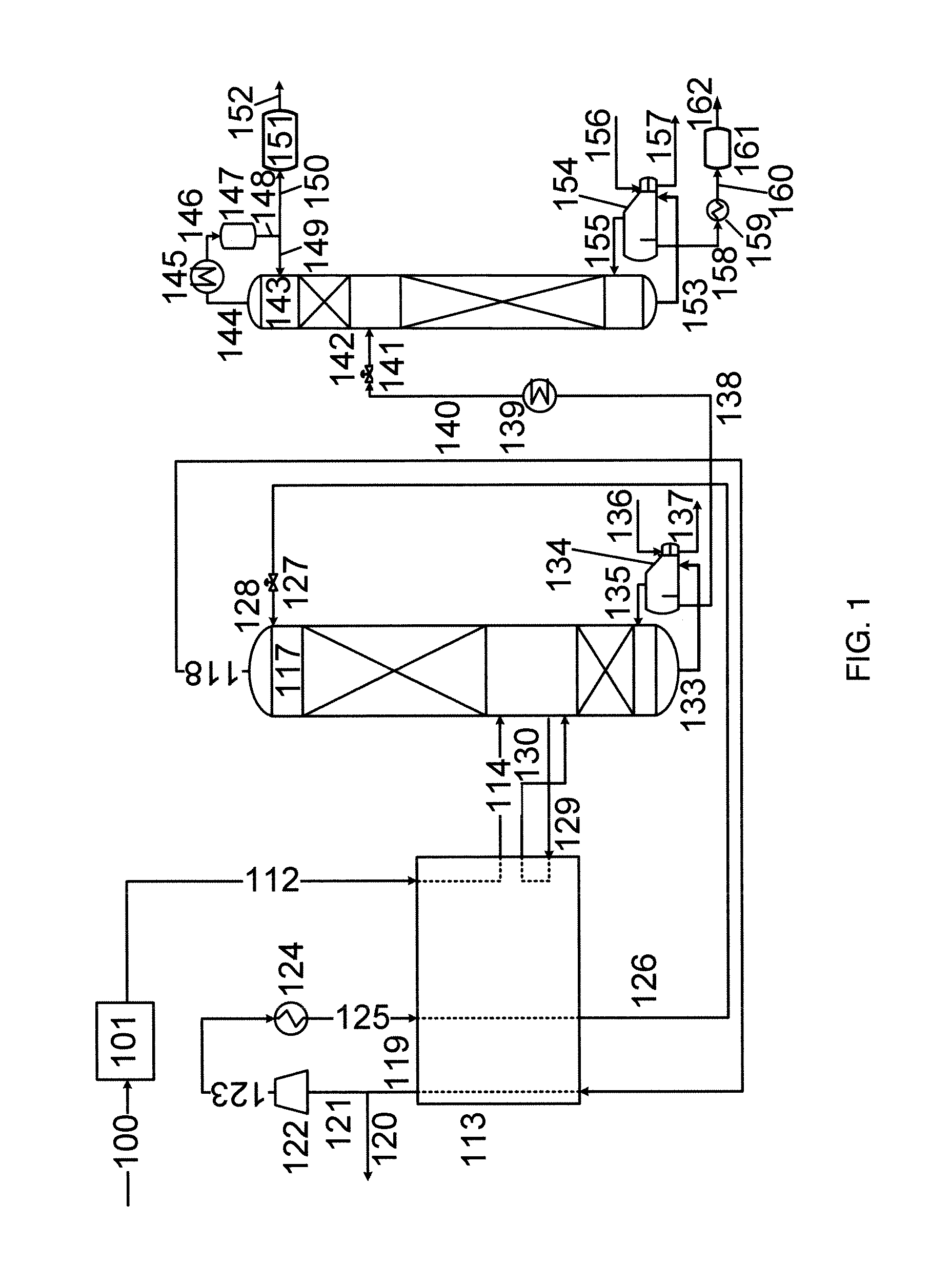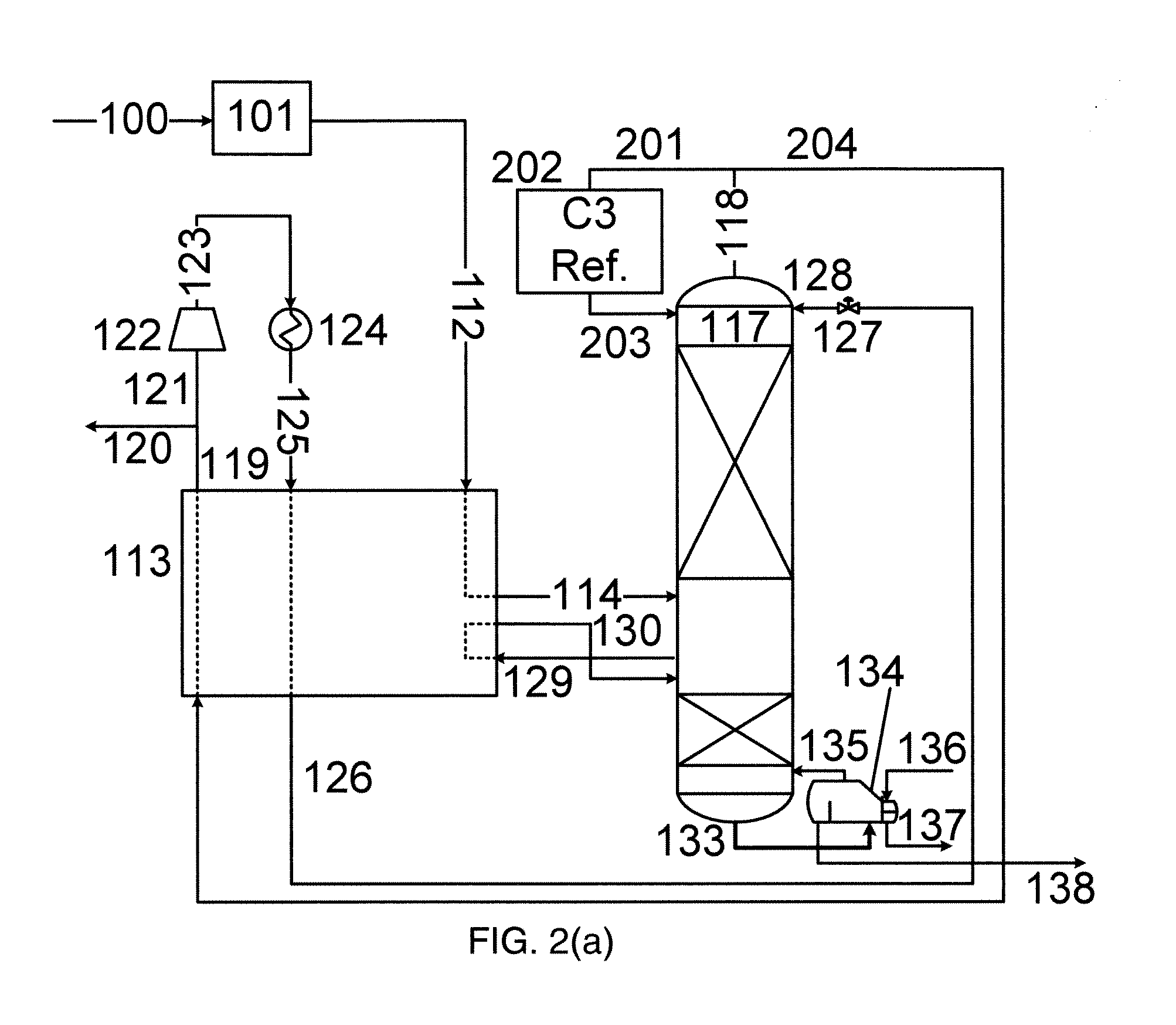Process For Recovering Hydrocarbons From Crude Carbon Dioxide Fluid
a technology of crude carbon dioxide and hydrocarbons, which is applied in the direction of gaseous mixture working up, separation process, borehole/well accessories, etc., can solve the problems of inefficient and expensive process, relatively high duty requirement of the bottom reboiler, and loss of valuable propane components in the process, so as to reduce the energy requirement for separating carbon dioxide and ngls by distillation, improve the heat integration of the carbon dioxide processing scheme, and minimize the effect of duty requiremen
- Summary
- Abstract
- Description
- Claims
- Application Information
AI Technical Summary
Benefits of technology
Problems solved by technology
Method used
Image
Examples
example 1
[0211]By way of example of an advantage of the present invention, the calculated power consumption of the initial distillation process in column 117 of FIG. 1 is compared to the calculated power consumption of an equivalent process involving a propane refrigeration cycle. Both processes have been modelled using Aspen™ Plus software (version 7.2).
[0212]In the comparative propane refrigeration cycle, it has been assumed that the condensing duty of the distillation column 117 is provided by a propane refrigeration system. The feed is cooled against the carbon dioxide product stream 118 before it enters the distillation column 117. There are no side reboilers.
[0213]Using the same feed (as shown in Table 1) and the same specifications on the compositions of the carbon dioxide and NGL products (as shown in Table 2), we estimated the major differences in utility cost between the two cycles. The results are shown in Table 3. It should be noted that only the utility costs for the first disti...
example 2
[0217]Table 4 illustrates an example of a quantatitive comparison between different blending strategies based on product streams shown in Table 2. Assumptions on the price of different hydrocarbon components are made solely to represent their relative value. Strategy a, b, c in the table correspond to the blending strategy shown in FIG. 3 (a), (b), (c) respectively, as modelled using Aspen™ Plus (version 7.2). In this example, strategy (b) yields the highest economic value of the final products and both of the RVP and API gravity of the blended oil achieve their maximum values.
TABLE 4Price ($ / barrel)NGLC325C440C5+70Blended oil85Blending constrainsReid Vapor Pressure (RVP)≦10 psi (69 kPa)API gravity≦50°Adjustable parametersboilup ratioreflux ratioBlending StrategyabcMaximized economic27.828.828.6value MM (“million”)$ / yearReid Vapor4.8 psi10.0 psi (69 kPa)10.0 psi (69 kPa)Pressure (RVP)(33 kPa)API gravity50.0°50.0°50.0°
PUM
 Login to View More
Login to View More Abstract
Description
Claims
Application Information
 Login to View More
Login to View More - R&D
- Intellectual Property
- Life Sciences
- Materials
- Tech Scout
- Unparalleled Data Quality
- Higher Quality Content
- 60% Fewer Hallucinations
Browse by: Latest US Patents, China's latest patents, Technical Efficacy Thesaurus, Application Domain, Technology Topic, Popular Technical Reports.
© 2025 PatSnap. All rights reserved.Legal|Privacy policy|Modern Slavery Act Transparency Statement|Sitemap|About US| Contact US: help@patsnap.com



